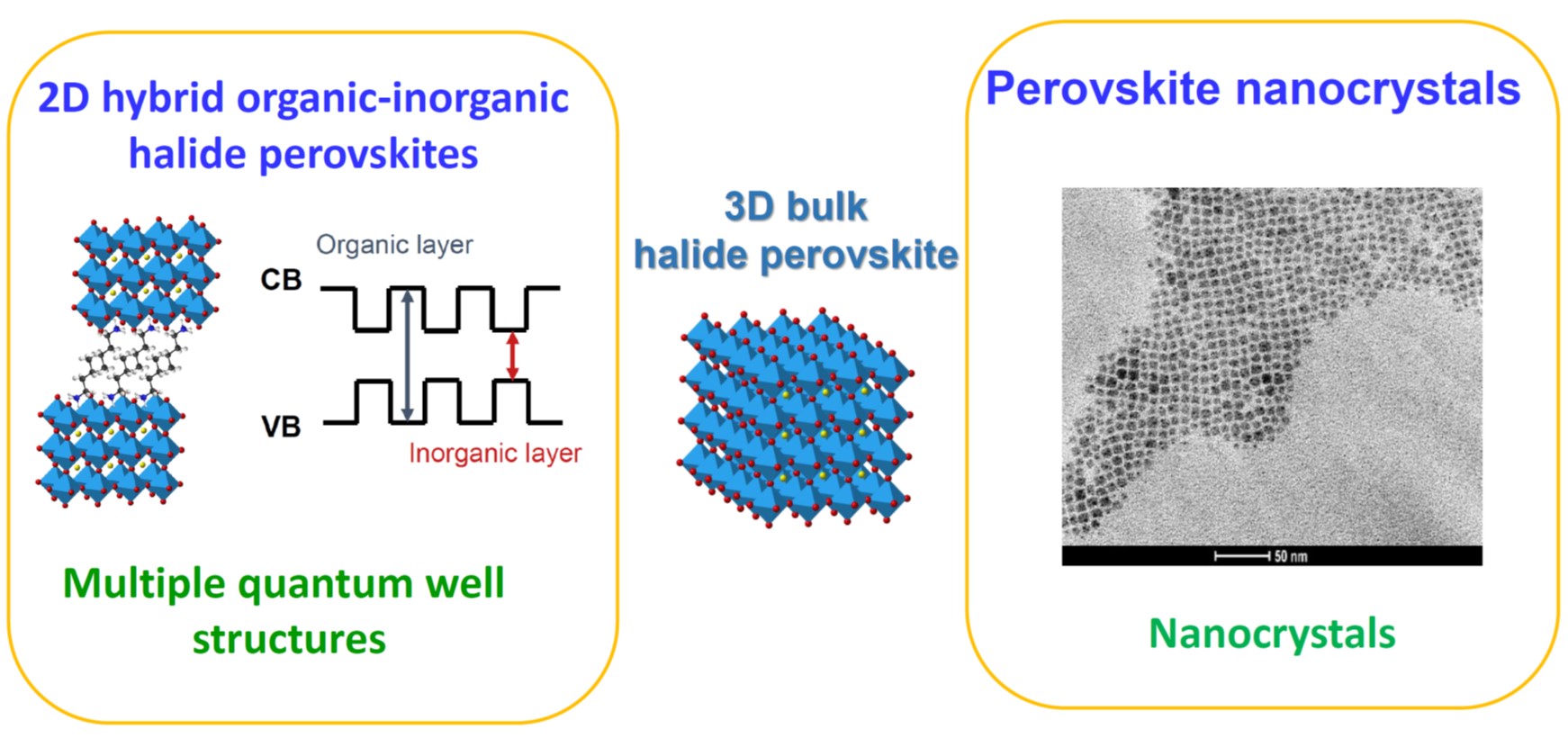
Organic–inorganic hybrid perovskites (OIHPs) have attracted a significant amount of attention for photovoltaic applications since their power conversion efficiency (PCE) has reached over 25%, which is already approaching the performance of commercial Si-based solar cells. The impressive PCE of OIHP photovoltaics is mainly attributed to their outstanding physical properties, such as a high optical absorption coefficient, low exciton binding energy and long and balanced electron–hole diffusion length. We have been working on perovskite solar cells for the past few years, not only for the device performance but also on the understanding of the fundamental mechanism. In addition, we have extensive research activities on the quantum structures of perovskite materials, including two-dimensional organic–inorganic hybrid perovskites (2D OIHPs), and perovskite quantum dots (0D).
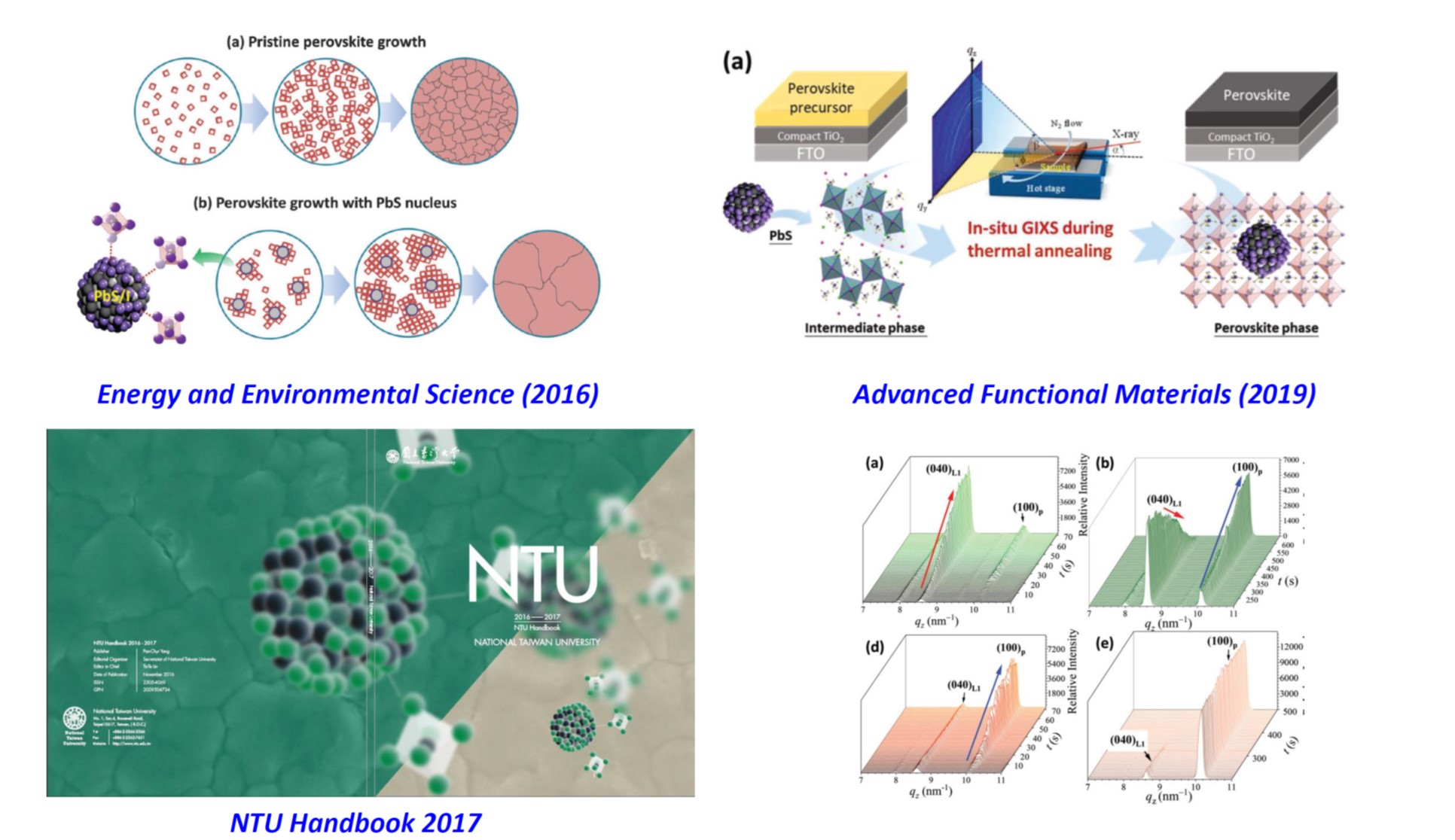
This work proposes a novel approach to modulate the nucleation and growth of perovskite crystals in planar perovskite (CH3NH3PbI3xClx) solar cells by intermixing precursor-capped inorganic nanoparticles of PbS. Through this intermixing-seeded growth technique, substantial morphological improvements, such as increased crystal domains, enhanced coverage, and uniformity, were realized in the perovskite thin films, and the corresponding solar cell devices exhibited a promising power conversion efficiency. (Energy and Environmental Science, 9, 1282, (2016)) The corresponding growth mechanism was further unveiled by time-resolved grazing-incidence X-ray scattering. The intermediate structures and the corresponding growth kinetics during conversion to perovskite crystal thin films assisted by seeding PbS nanocrystals (NCs), using time-resolved grazing-incidence X-ray scattering. Through analyses of time-resolved crystal formation kinetics obtained from synchrotron X-rays with a fast subsecond probing time resolution, an important “catalytic” role of the seed-like PbS NCs is clearly elucidated. (Advanced Functional Materials, 1902582, (2019)). Our research result was used as the cover of the NTU handbook on 2017.
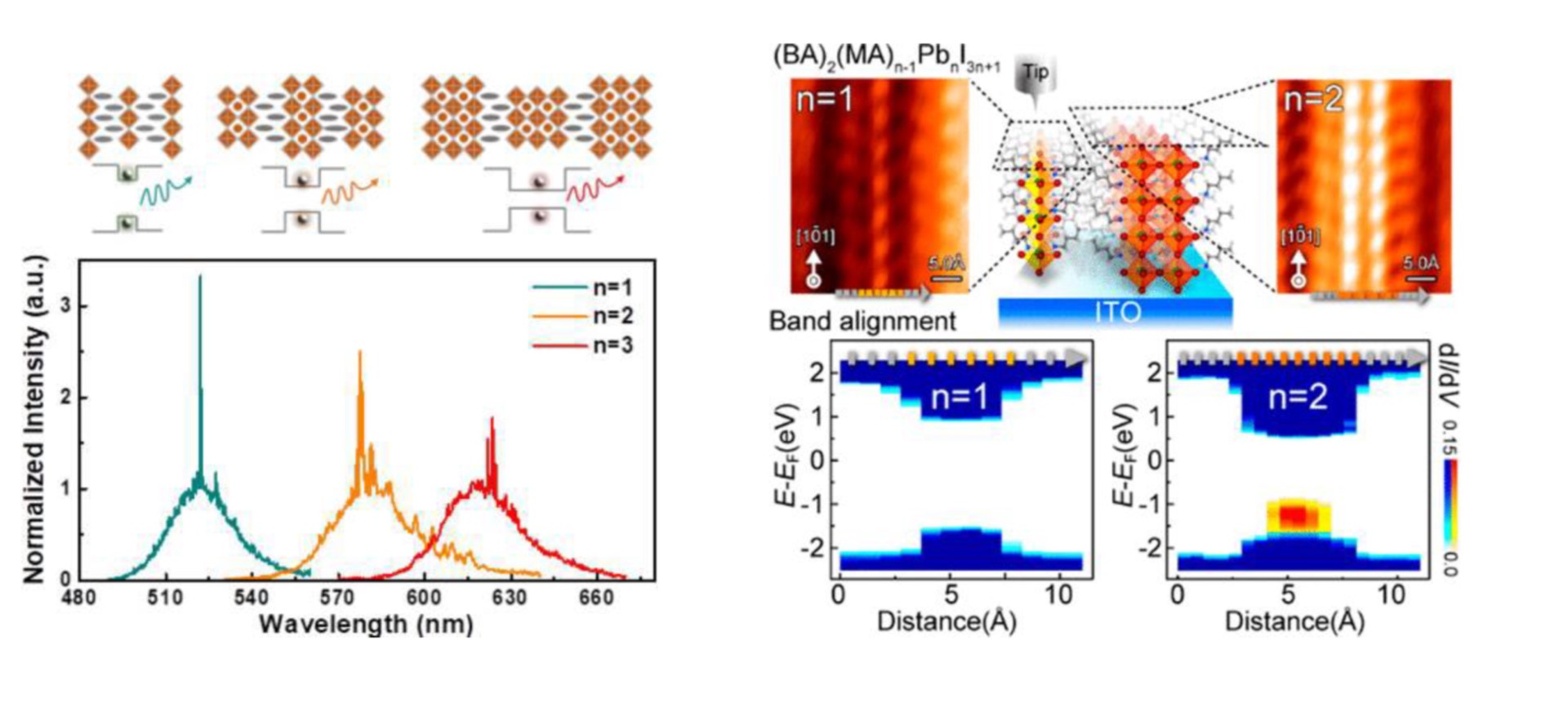
The 2D Ruddlesden−Popper perovskites (RPPs) have a naturally formed “quantum-well (QW)-like” structure consisting of inorganic perovskite layers of corner-sharing PbX6 octahedra sandwiched between organic spacers. The value of n is the number of inorganic perovskite layers per unit cell that determines the width of the QW and consequently the tunability of the optoelectronic properties of the 2D RPPs. We reported the growth of high-quality millimeter-sized single crystals. Low-threshold lasing behaviors with different emission wavelengths at room temperature have been observed from the homologous 2D hybrid RPP single crystals. (Nano Letters, 18, 3221, 2018) In addition, the atomically resolved quantum-confined electronic structures at organic−inorganic heterointerfaces of twodimensional (2D) organic−inorganic hybrid Ruddlesden−Popper perovskites (RPPs); this is accomplished with scanning tunneling microscopy (STM) and scanning tunneling spectroscopy (STS).(Nano Letters, 21, 8066, 2021) (Collaboration with Prof. Yap-ing Chiu (NTU))
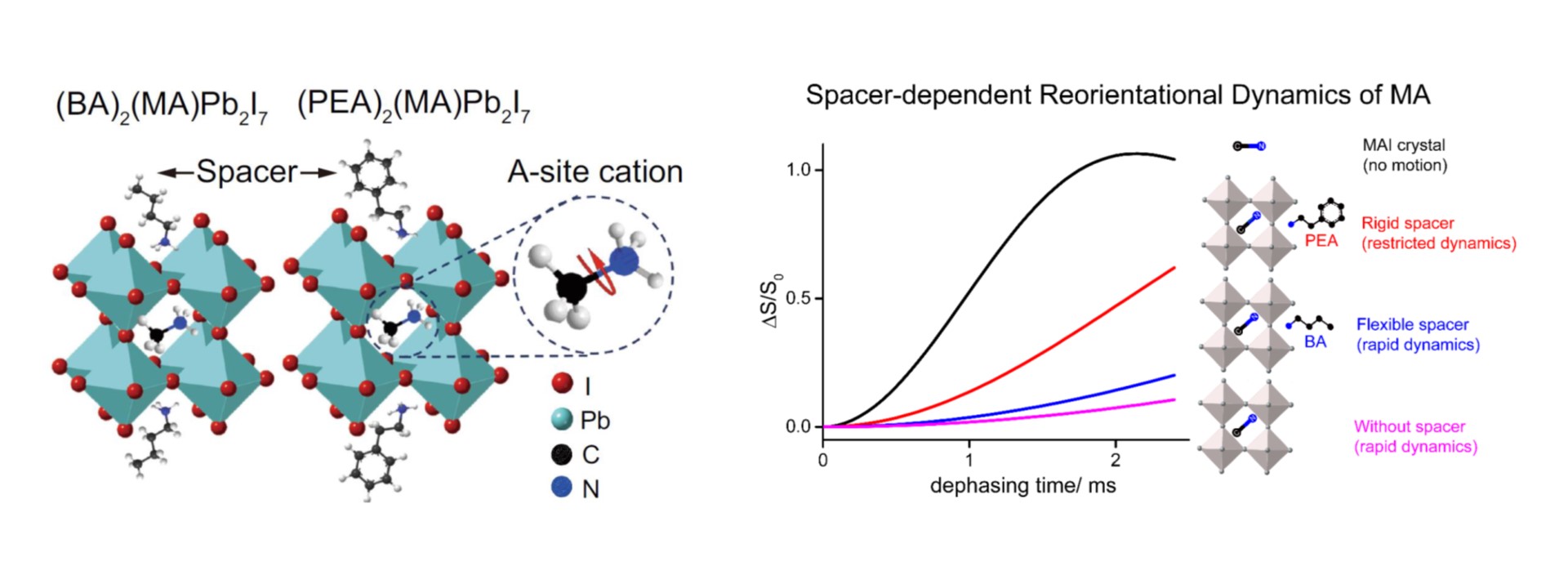
Limited methods are available for investigating the reorientational dynamics of A-site cations in two-dimensional organic–inorganic hybrid perovskites (2D OIHPs), which play a pivotal role in determining their physical properties. Here, we describe an approach to study the dynamics of A-site cations using solid-state NMR and stable isotope labelling. 2H NMR of 2D OIHPs incorporating methyl-d3-ammonium cations (d3-MA) reveals the existence of multiple modes of reorientational motions of MA.(Nature Communications, 13, 1513, (2022)) (Collaboration with Dr. Tsyr-Yan Yu, Academia Sinica)
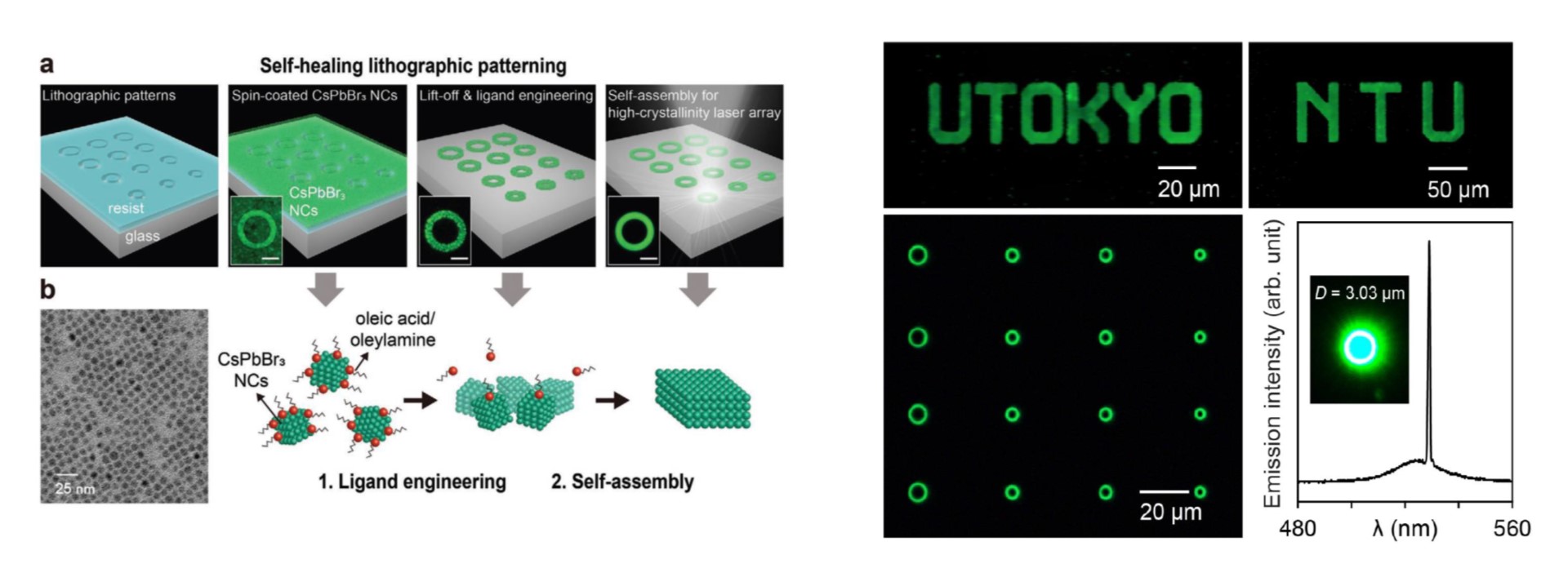
The chief bottleneck to achieving lithography of perovskites lies in their reactivity to chemicals used for lithography as illustrated by issues of instability, surface roughness, and internal defects with the fabricated structures. The realization of lithographic perovskite single-mode lasers in large areas remains a challenge. In this work, a self-healing lithographic patterning technique using perovskite CsPbBr3 nanocrystals is demonstrated to realize high-quality and high-crystallinity single-mode laser arrays. The self-healing process is compatible with the standard lithography process and greatly improves the quality of lithographic laser cavities. A single-mode microdisk laser array is demonstrated with a low threshold of 3.8 μJ cm-2. (Advanced Functional Materials, 2006283, 2021) (International Collaboration with University of Tokyo)